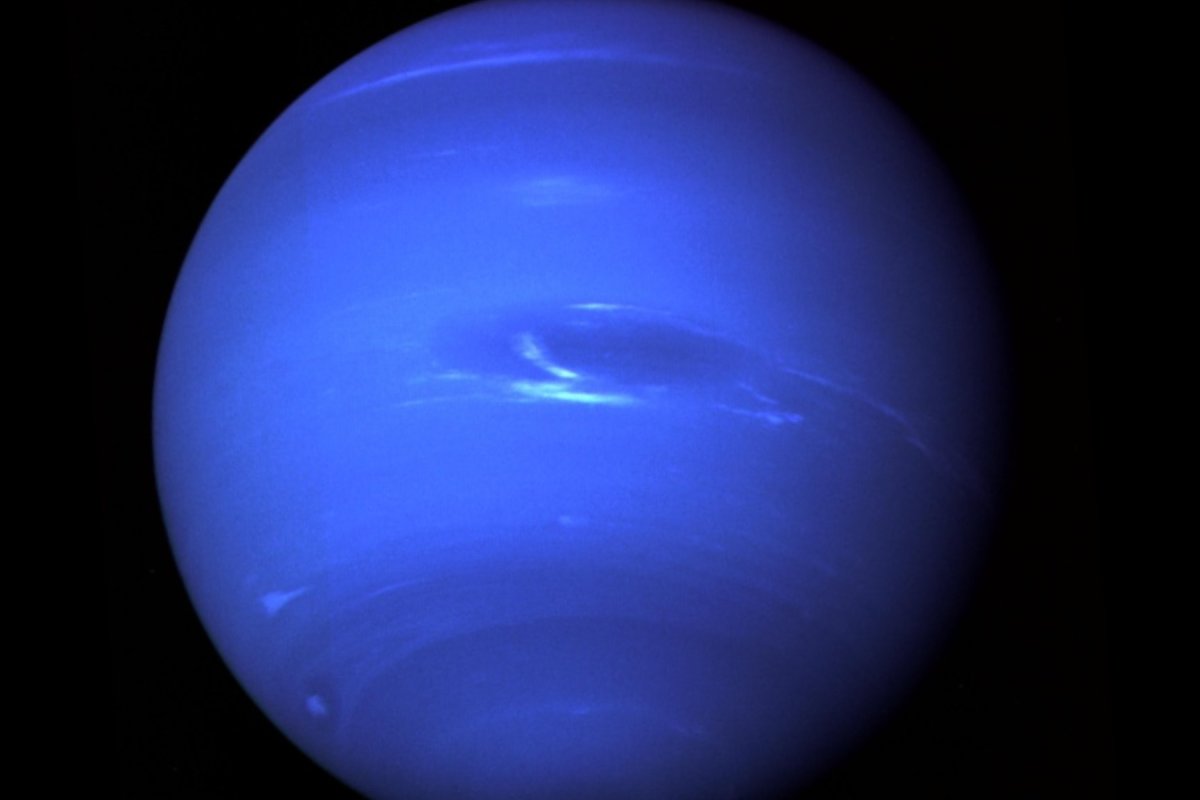Neptune, one of our most distant planetary neighbors, may not be the color we’ve always thought it was.
Previous images of far-off planets showed Neptune as being a deep electric blue, while Uranus appeared a sea-foam green. However, new images have revealed that the two planets are, in fact, much more similar in color to each other.
Both planets are instead a similar shade of green-blue, according to a new paper in the journal Monthly Notices of the Royal Astronomical Society.
“The misperception of Neptune’s color, as well as the unusual color changes of Uranus, have bedeviled us for decades. This comprehensive study should finally put both issues to rest,” Heidi Hammel, a Neptune and Uranus researcher at the Association of Universities for Research in Astronomy (AURA) who did not contribute towards the study, said in a statement.
Patrick Irwin
The common misconception that Neptune was blue and Uranus green arose thanks to images taken by the NASA Voyager 2 mission, which snapped the two planets as it flew past the outer solar system. Voyage 2 took a variety of pictures of each planet in several separate colors, which were then combined to make composite color images.
However, these composites were not accurately balanced to represent the “true” color of the planets, with Uranus appearing a pale green but Neptune seeming much too blue, exacerbated by increased contrast on the Neptune images.
Astronomers have known for decades that the two planets were similar shades: both more similar to the traditional color of Uranus.
“Although the familiar Voyager 2 images of Uranus were published in a form closer to ‘true’ color, those of Neptune were, in fact, stretched and enhanced, and therefore made artificially too blue,” Patrick Irwin, co-author of the paper and professor of astronomy at the University of Oxford, said in a statement.
“Even though the artificially-saturated color was known at the time amongst planetary scientists – and the images were released with captions explaining it – that distinction had become lost over time,” he said. “Applying our model to the original data, we have been able to reconstitute the most accurate representation yet of the colour of both Neptune and Uranus.”

Patrick Irwin
The new paper revealed the true colors of the planets in images created using data from Hubble Space Telescope’s Space Telescope Imaging Spectrograph (STIS) and the Multi Unit Spectroscopic Explorer (MUSE) on the European Southern Observatory’s Very Large Telescope.
The pictures show that the planets are very similar in hue, with Neptune having only a slight blue tinge as a result of the planet having a thinner layer of haze than Uranus.
The study has also revealed why Uranus’s color appears to change somewhat during the course of its 84-year orbit of the sun. Between 1950 and 2916, Uranus has been spotted appearing more green during its summer and winter solstices, when its poles point more towards the sun, and more blue during its equinoxes.
This is because of Uranus’s strange spin, almost on its side with its axis at nearly a right angle to our planet’s. Therefore, during the solstice, the poles are pointing nearly directly at the sun.
This study describes a model that was developed to compare the light spectra of Uranus’s polar regions to its equatorial regions, showing how the reflectiveness of the regions differed and, thus, why the planet appears as being different colors during different periods of the orbit.
The model reveals that Uranus’s polar regions reflect more green and red wavelengths than the equator due to the greater presence of methane—which absorbs red light rather than reflecting it—at the equator than the poles. Additionally, a haze of icy methane particles may also play into this color change.
“This is the first study to match a quantitative model to imaging data to explain why the color of Uranus changes during its orbit,” Irwin said.
“In this way, we have demonstrated that Uranus is greener at the solstice due to the polar regions having reduced methane abundance but also an increased thickness of brightly scattering methane ice particles.”
Do you have a tip on a science story that Newsweek should be covering? Do you have a question about Neptune? Let us know via [email protected].
Uncommon Knowledge
Newsweek is committed to challenging conventional wisdom and finding connections in the search for common ground.
Newsweek is committed to challenging conventional wisdom and finding connections in the search for common ground.


